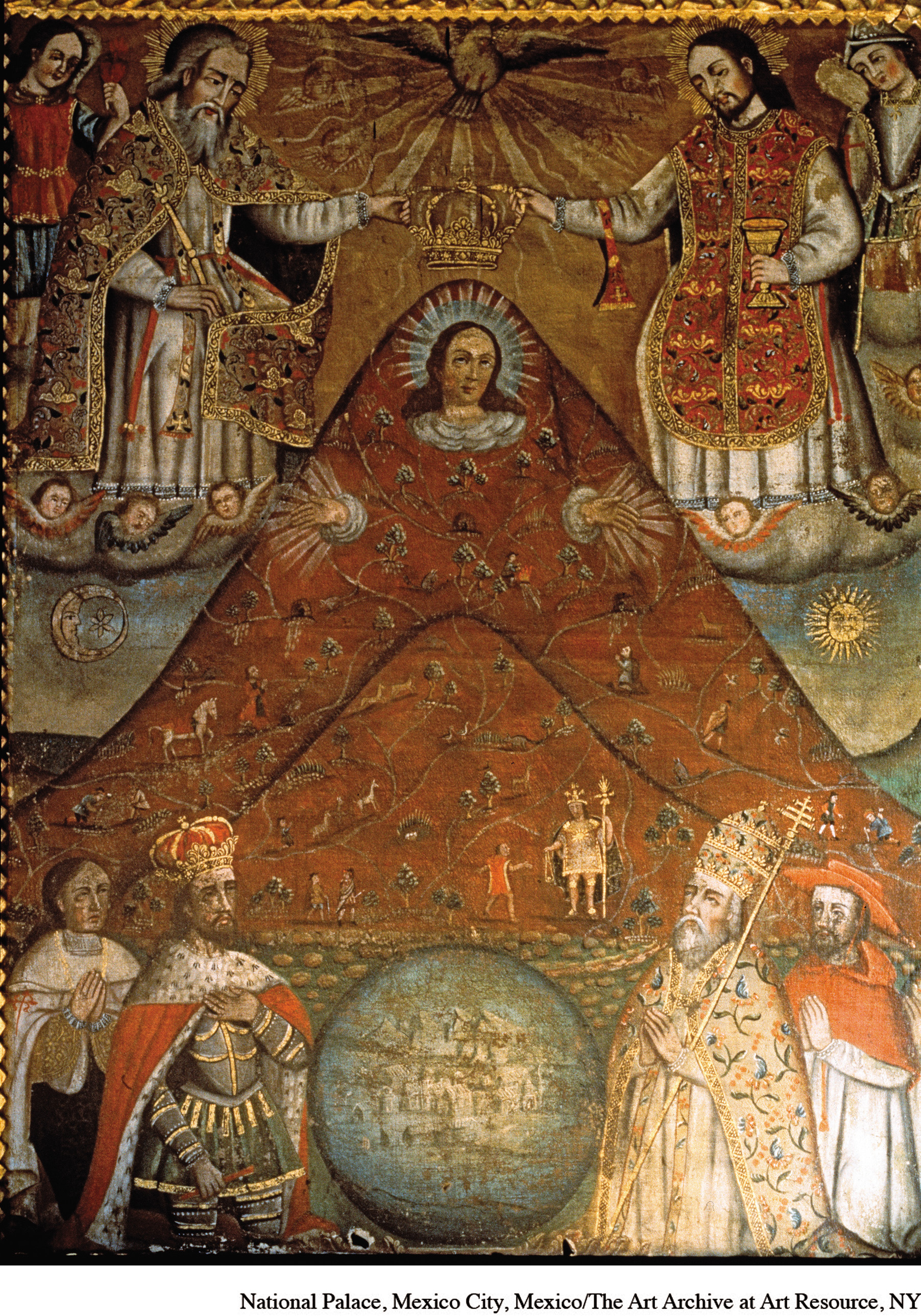15.3 Cultural Blending in Andean Christianity
Throughout Latin America, Christianity was established in the context of European conquest and colonial rule (see “Conversion and Adaptation in Spanish America”). As the new faith took hold across the region, it incorporated much that was of European origin, as the construction of many large and ornate Baroque churches illustrates. But local communities also sought to blend this European Catholic Christianity with religious symbols and concepts drawn from their own traditions in a process that historians call syncretism. In the Andes, for example, Inca religion featured a supreme creator god (Viracocha); a sun god (Inti), regarded as the creator of the Inca people; a moon goddess (Killa), who was the wife of Inti and was attended by an order of priestesses; and an earth mother goddess (Pachamama), associated with mountain peaks and fertility. Those religious figures found their way into Andean understanding of Christianity, as Source 15.3 illustrates.
Painted around 1740 by an unknown artist, this striking image shows the Virgin Mary placed within the “rich mountain” of Potosí in Bolivia, from which the Spanish had extracted so much silver (see Zooming in: Potosí). Thus Christianity was visually expressed in an Andean tradition that viewed mountains as the embodiment of the gods. A number of smaller figures within the mountain represent the native miners whose labor had enriched their colonial rulers. A somewhat larger figure at the bottom of the mountain is an Inca ruler dressed in royal garb receiving tribute from his people. At the bottom left are the pope and a cardinal, while on the right stand the Habsburg emperor Charles V and perhaps his wife.

- What is Mary’s relationship to the heavenly beings standing above her (God the Father on the right; the dove, symbolizing the Holy Spirit, in the center; and Jesus on the left) as well as to the miners at work in the mountain? What is the significance of the crown above her head and her outstretched arms?
- The European figures at the bottom are shown in a posture of prayer or thanksgiving. What might the artist have been trying to convey? How would you interpret the relative size of the European and Andean figures?
- Why do you think the artist placed Mary actually inside the mountain rather than on it, while depicting her dress in a mountain-
like form? - What marks this painting and the image “Andean Christianity” as examples of syncretism?
- Do you read these two images from the Andes as subversive of the colonial order or as supportive of it? Do you think the artist who painted Source 15.3 was a European or a Native American Christian?